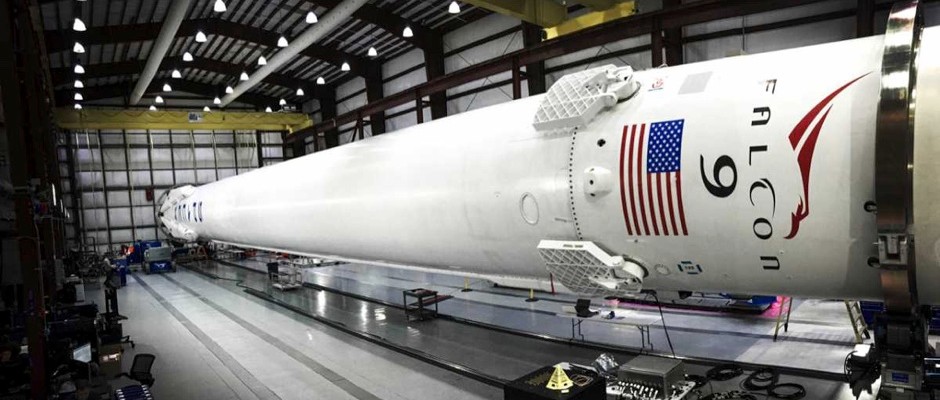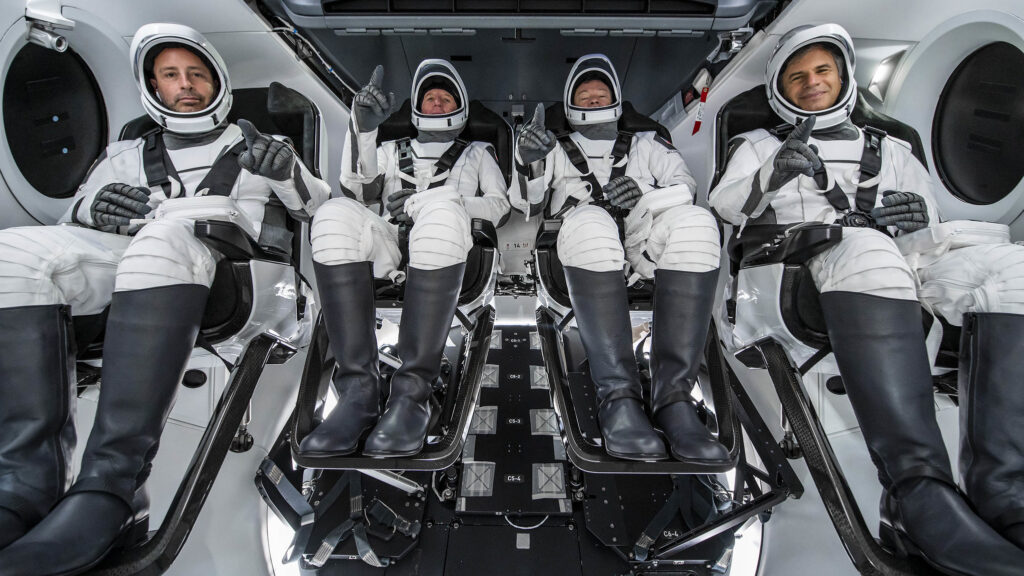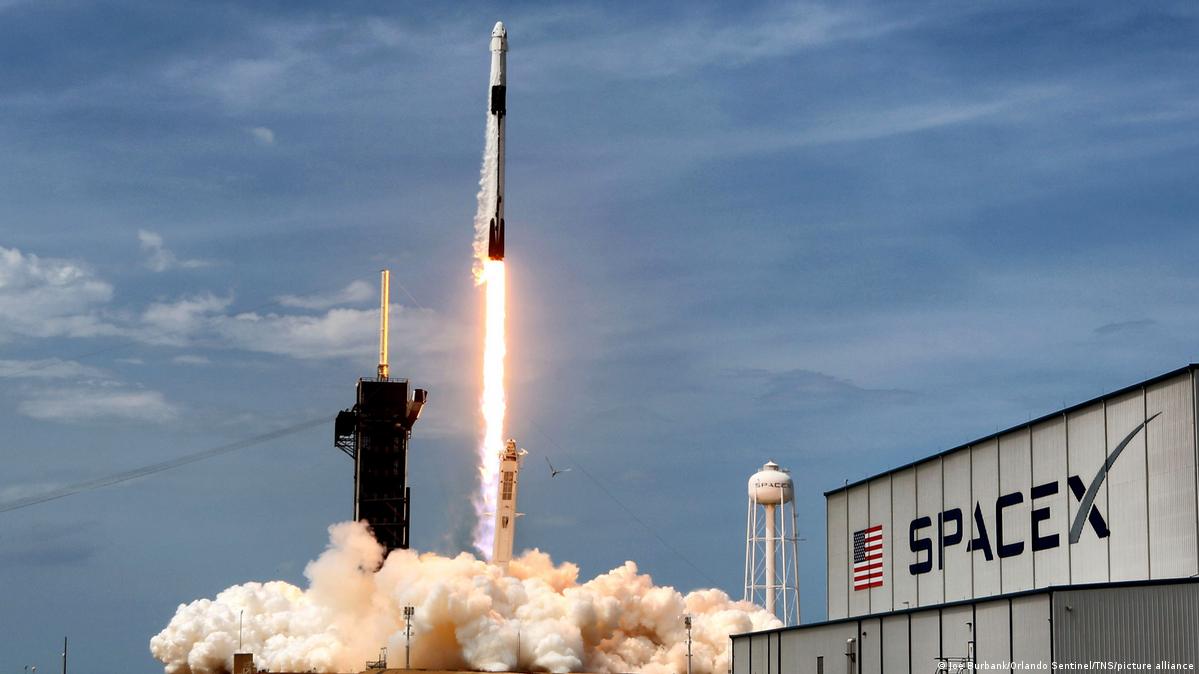What is SpaceX about?
SpaceX, short for Space Exploration Technologies Corp., is a private American aerospace manufacturer and space transportation company. It was founded in March 2002 by entrepreneur Elon Musk, who had a vision of making life multi-planetary. The company’s primary goal is to enable humans to become a multi-planetary species by colonizing Mars and other planets in the solar system. SpaceX has gained worldwide recognition for its innovative technologies, revolutionary spacecraft, and reusable rockets.
Since its inception, SpaceX has achieved several milestones in the space industry. One of its key achievements is launching rockets into space. As of 2021, SpaceX has launched over 130 missions to space, including more than 100 successful rocket launches. The company’s Falcon 9 rocket is the first orbital-class rocket capable of reflight, which means that it can be reused multiple times. The Falcon 9 has been used for a variety of missions, including satellite launches, resupply missions to the International Space Station (ISS), and crewed missions.
Another notable aspect of SpaceX is its focus on reusability. The company has developed the Falcon 9 rocket and Dragon spacecraft, both of which are designed to be reusable. The Falcon 9 rocket has a first-stage booster that can land back on Earth after launching, while the Dragon spacecraft can be reused for future missions. This approach to reusability has enabled SpaceX to reduce the cost of spaceflight significantly and make space exploration more accessible.
In 2020, SpaceX made history by launching NASA astronauts to the ISS as part of the Commercial Crew Program. This was the first crewed mission launched from U.S. soil since the retirement of the Space Shuttle in 2011. The spacecraft used for this mission was the Crew Dragon, which was designed and built by SpaceX. The successful launch demonstrated SpaceX’s capability to provide reliable and safe access to space for humans.
In addition to its efforts in space exploration, SpaceX is also working on developing a satellite internet service called Starlink. The goal of Starlink is to provide high-speed internet access to remote areas of the world where traditional internet infrastructure is unavailable or unreliable.
In conclusion, SpaceX is a pioneering company that has achieved many milestones in the space industry. Its focus on reusability, innovative technologies, and space exploration has inspired a new era of spaceflight. With its ambitious goals of colonizing Mars and making life multi-planetary, SpaceX is leading the way in creating a future where humans can explore and thrive beyond Earth’s atmosphere.
History of SpaceX / How did SpaceX come into existence?
SpaceX was founded in March 2002 by Elon Musk, an entrepreneur with a passion for space exploration. Musk had previously co-founded PayPal, an online payment company, and had sold it to eBay for $1.5 billion in 2002. With his newfound wealth, Musk decided to pursue his long-standing interest in space exploration and founded SpaceX.
The initial goal of SpaceX was to develop a new type of rocket that could be used for space exploration and satellite launches. Musk believed that existing rockets were too expensive and unreliable, and that a new approach was needed to make spaceflight more accessible and affordable.
To achieve this goal, Musk assembled a team of engineers and experts in aerospace and rocketry. The team worked on developing new technologies and innovative solutions to the challenges of spaceflight, including reusability, reliability, and cost-effectiveness.
In 2006, SpaceX achieved its first major milestone by launching its Falcon 1 rocket into orbit. This was a significant achievement for the company, as it demonstrated the viability of its technologies and the potential for a new era of space exploration.
Over the years, SpaceX continued to develop and refine its rockets and spacecraft, including the Falcon 9 rocket and Dragon spacecraft. These innovations allowed SpaceX to secure contracts with NASA and other organizations for satellite launches and resupply missions to the International Space Station.
In addition to its achievements in space exploration, SpaceX has also made significant strides in the field of reusability. The company’s focus on reusable rockets and spacecraft has enabled it to reduce the cost of spaceflight and make it more accessible to a broader range of customers.
Today, SpaceX is one of the most significant players in the space industry, with a portfolio of successful launches and groundbreaking innovations. The company’s mission to make life multi-planetary and colonize Mars continues to inspire and excite people around the world, and its achievements have sparked a renewed interest in space exploration and the possibilities of the future.
Timelines of SpaceX – SpaceX through the years
SpaceX has gone through different phases in its history, each marked by significant milestones and achievements. Here is a brief overview of the different phases of SpaceX and their timelines:
Phase 1 (2002-2008): The Founding Years
- March 2002: SpaceX is founded by Elon Musk with the goal of reducing the cost of spaceflight and making life multi-planetary.
- March 2006: SpaceX achieves its first successful orbital launch with the Falcon 1 rocket.
- September 2008: SpaceX wins a $1.6 billion contract with NASA to provide cargo resupply missions to the International Space Station (ISS).
Phase 2 (2009-2015): Expansion and Innovation
- June 2010: SpaceX becomes the first privately-funded company to send a spacecraft, the Dragon, into orbit and recover it successfully.
- December 2010: SpaceX launches the Falcon 9 rocket for the first time, marking a significant milestone in rocket reusability.
- May 2012: SpaceX launches its Dragon spacecraft to the ISS, becoming the first private company to send a spacecraft to the station.
- December 2015: SpaceX achieves its first successful landing of the Falcon 9 rocket, a significant milestone in rocket reusability.
Phase 3 (2016-2019): Reusability and Commercial Crew Program
- March 2017: SpaceX launches and lands a used Falcon 9 rocket for the first time, demonstrating the viability of reusable rockets.
- February 2018: SpaceX successfully launches the Falcon Heavy rocket, becoming the most powerful operational rocket in the world.
- March 2019: SpaceX successfully completes a demonstration mission for NASA’s Commercial Crew Program, sending the Crew Dragon spacecraft to the ISS with no crew on board.
Phase 4 (2020-present): Crewed Missions and Starship Development
- May 2020: SpaceX successfully launches and docks the Crew Dragon spacecraft with NASA astronauts on board, marking the first crewed mission launched from U.S. soil since the retirement of the Space Shuttle in 2011.
- December 2020: SpaceX launches the first operational mission for NASA’s Commercial Crew Program, sending four astronauts to the ISS on the Crew Dragon spacecraft.
- May 2021: SpaceX successfully lands its Starship prototype for the first time, marking a significant milestone in the development of the next-generation spacecraft.
- September 2021: SpaceX launches its Inspiration4 mission, sending the first all-civilian crew into orbit around Earth for three days.
These different phases of SpaceX’s history demonstrate the company’s evolution from a small startup to a major player in the space industry. SpaceX’s innovative technologies and achievements have revolutionized spaceflight and inspired a new era of exploration and discovery.
Explore different SpaceX launches
How SpaceX changed the space exploration forever
SpaceX has had a significant impact on the space exploration industry, transforming the way we think about spaceflight and opening up new possibilities for space exploration. Here are some of the key ways that SpaceX has changed space exploration forever:
Reusable Rockets:
One of the key innovations that has allowed SpaceX to disrupt the space industry is the development of reusable rockets. Historically, rockets were designed as single-use vehicles that would burn up or crash into the ocean after completing their mission. This meant that each new mission required a brand-new rocket, which was expensive and time-consuming to produce.
By contrast, SpaceX has developed a series of reusable rockets that are capable of returning to Earth and landing vertically, ready to be refurbished and used again for future missions. This dramatically reduces the cost of each launch, as the most expensive component of the rocket—the first-stage booster—can be reused multiple times. In fact, SpaceX estimates that its reusable rockets can reduce the cost of launching payloads into orbit by up to 30%.
The first reusable rocket developed by SpaceX was the Falcon 9, which features a set of nine engines on the first stage that are used to power the rocket into space. Once the first stage has expended most of its fuel, it separates from the second stage and begins a controlled descent back to Earth. Using a combination of thrusters and aerodynamic control surfaces, the first stage is able to make a pinpoint landing on a designated landing pad or drone ship in the ocean.
In addition to the Falcon 9, SpaceX has also developed a larger and more powerful rocket called the Falcon Heavy, which features three reusable first-stage boosters. The Falcon Heavy is capable of lifting heavier payloads into orbit and has been used to launch a range of missions for both government and private customers.

Commercial Spacecraft:
SpaceX has become a major player in the commercial spaceflight industry, offering a range of services for both government and private customers. The company’s reusable rockets and spacecraft have significantly reduced the cost of space transportation, making it more accessible to a wider range of customers.
One of SpaceX’s key commercial offerings is its Falcon 9 rocket, which is capable of launching satellites and other payloads into orbit. The rocket features reusable first-stage boosters, which can land back on Earth and be refurbished for future use, dramatically reducing the cost of each launch. SpaceX has launched a wide range of payloads for commercial customers, including satellites for telecommunications companies, Earth observation satellites, and payloads for scientific research.
In addition to its satellite launch services, SpaceX has also developed a spacecraft capable of transporting crew and cargo to and from the International Space Station (ISS). The Crew Dragon spacecraft, which was developed in partnership with NASA, is designed to carry up to seven passengers to and from the ISS. In 2020, SpaceX made history by becoming the first private company to launch astronauts to the ISS, marking a major milestone in the commercialization of spaceflight.

Private Spaceflight:
SpaceX has been at the forefront of the private spaceflight industry, offering a range of services for individuals and organizations that want to travel to space or conduct research in space. Here are some examples of SpaceX’s private spaceflight services:
- Space tourism: In 2021, SpaceX announced its plans to launch the world’s first all-civilian mission to orbit, called Inspiration4. The mission was funded by billionaire Jared Isaacman, who purchased all four seats on the Crew Dragon spacecraft and invited three other people to join him. The mission launched on September 15, 2021, and the crew spent three days in orbit before returning to Earth.
- Research and scientific missions: SpaceX has launched a range of scientific payloads to the International Space Station (ISS) on behalf of government agencies, academic institutions, and private companies. These payloads include experiments in biology, physics, and materials science, as well as technology demonstrations and hardware upgrades.
- Lunar tourism: In 2018, SpaceX announced that it had signed a contract with Japanese billionaire Yusaku Maezawa to fly him and a group of artists around the Moon on the company’s upcoming Starship spacecraft. The mission, which is scheduled to launch in the mid-2020s, would be the first private spaceflight to circumnavigate the Moon.
- Space cargo and logistics: In addition to its Crew Dragon spacecraft, SpaceX has developed a cargo version of the spacecraft called Dragon. Dragon has been used to deliver supplies, equipment, and experiments to the ISS under contract with NASA. SpaceX has also developed a cargo spacecraft called the Big Falcon Rocket, which is designed to carry larger payloads to space and could be used for commercial missions.
Planetary Exploration:
SpaceX’s primary focus has been on developing technologies for space transportation, with a particular emphasis on launching payloads into Earth orbit and beyond. However, the company has also expressed interest in planetary exploration, and has several initiatives underway to support this goal.
Here are some examples of SpaceX’s efforts in planetary exploration:
- Mars missions: SpaceX’s founder and CEO, Elon Musk, has made it clear that his ultimate goal is to establish a permanent human settlement on Mars. To this end, the company is developing a massive spacecraft called Starship, which is designed to transport up to 100 people to Mars at a time. SpaceX has conducted several test flights of Starship prototypes, and plans to launch an uncrewed mission to Mars as early as 2024.
- Lunar missions: In addition to Mars, SpaceX is also interested in sending missions to the Moon. The company has signed a contract with NASA to develop a lunar lander as part of the agency’s Artemis program, which aims to send humans back to the Moon by 2024. SpaceX’s lunar lander, called Starship HLS, is designed to transport astronauts and cargo to the lunar surface, and could also be used for other missions in the solar system.
- Interplanetary communications: As part of its efforts to support planetary exploration, SpaceX is developing a constellation of satellites called Starlink, which is designed to provide high-speed internet access to users around the world. In addition to its commercial applications, Starlink could also be used to provide communications support for missions to other planets.
Overall, SpaceX’s initiatives in planetary exploration are part of a broader effort to establish a permanent human presence in space and extend our reach into the solar system. While the challenges of exploring other planets are immense, SpaceX’s track record of innovation and determination suggest that the company will continue to push the boundaries of what is possible in space exploration.
Innovation and Efficiency: Finally, SpaceX has transformed the space exploration industry by emphasizing innovation, efficiency, and speed. By employing a lean and agile approach to development, SpaceX has been able to rapidly iterate and improve its technology, launching more missions and achieving more milestones than many of its competitors. This has helped to push the boundaries of what is possible in space exploration and has inspired a new generation of space enthusiasts and entrepreneurs.
In conclusion, SpaceX has changed the space exploration industry forever by developing reusable rockets, democratizing spaceflight, enabling commercial space missions, paving the way for planetary exploration, and promoting innovation and efficiency. The company’s achievements have opened up new possibilities for space exploration and research, and have inspired a renewed sense of excitement and wonder about the universe and our place in it.
Also Read: Top 5 SpaceX Competitors And Alternatives
How SpaceX has grown over the years
SpaceX, the aerospace manufacturer and space transportation company, has experienced significant growth since its founding in 2002. From its initial focus on developing low-cost rockets for small satellites, to its current efforts to send humans to Mars, SpaceX has consistently pushed the boundaries of what is possible in space exploration.
One of the key factors in SpaceX’s growth has been its focus on innovation and efficiency. From the beginning, SpaceX founder Elon Musk has emphasized the importance of developing reusable rockets and other technologies that can dramatically reduce the cost of spaceflight. By pursuing this goal, SpaceX has been able to achieve a number of key milestones, including the first privately funded liquid-fueled rocket to reach orbit, the first private spacecraft to dock with the International Space Station, and the first landing of a reusable rocket on a drone ship.
In addition to its focus on innovation, SpaceX has also pursued a number of strategic partnerships and collaborations to support its growth. For example, the company has worked closely with NASA on a number of missions, including resupplying the International Space Station and transporting astronauts to and from the station. These partnerships have helped to cement SpaceX’s reputation as a reliable and trusted provider of space transportation services.
Another key driver of SpaceX’s growth has been its aggressive expansion into new markets and technologies. In addition to its work on reusable rockets and spacecraft, SpaceX has also developed a range of satellite and internet technologies through its subsidiary, Starlink. These efforts have helped to diversify the company’s revenue streams and position it for long-term growth in a rapidly evolving space industry.
Overall, SpaceX’s growth has been driven by a combination of innovation, strategic partnerships, and diversification. By consistently pushing the boundaries of what is possible in space exploration and pursuing new opportunities for growth and expansion, SpaceX has established itself as a key player in the space industry and a leading innovator in space technology. As the company continues to pursue its ambitious goals of sending humans to Mars and beyond, it is likely that we will see continued growth and success for SpaceX in the years to come.
To read more content like this, subscribe to our newsletter



